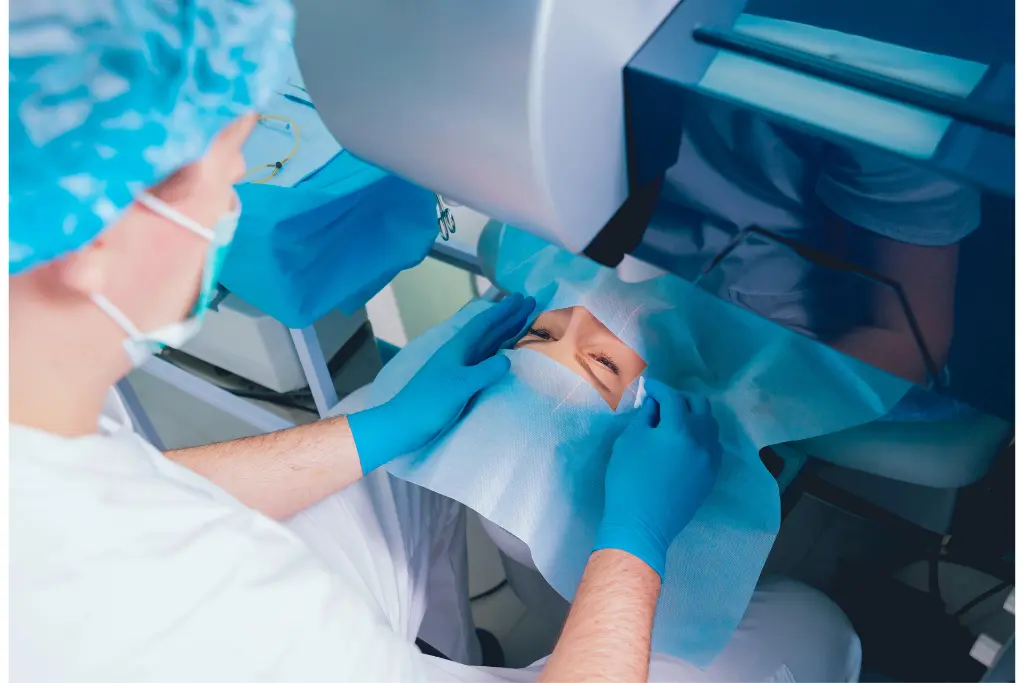LASIK stands as one of the most remarkable medical advancements of the last century, transforming the lives of millions by offering a path to clear, crisp vision free from the perpetual reliance on glasses or contact lenses. It is, by far, the most popular refractive surgery performed globally, celebrated for its minimal discomfort, rapid recovery time, and consistently excellent outcomes. The procedure works by using a highly sophisticated laser to precisely reshape the cornea, the transparent, dome shaped front part of your eye,to correct refractive errors like myopia (nearsightedness), hyperopia (farsightedness), and astigmatism.
Understanding the prerequisites for surgery can give you a significant head start in determining if you are likely to be a good fit. To help you on your journey toward visual freedom, we’re going to break down five key signs that indicate you are an ideal candidate for LASIK surgery in Los Angeles.
1. Stable Vision Prescription
One of the most fundamental requirements for successful, long term LASIK results is a stable vision prescription. Why is this stability so critical? LASIK permanently alters the shape of your cornea. If your nearsightedness, farsightedness, or astigmatism continues to progress after the procedure, your vision will eventually blur again, necessitating another surgery or, worse, requiring you to go back to wearing corrective lenses.
The typical requirement set by reputable surgeons is no significant change in prescription for at least 12 consecutive months. For many candidates, particularly those who began wearing glasses in childhood, their prescription naturally stabilizes in their early to mid twenties. Opting for LASIK while your prescription is still evolving due to natural growth or hormonal shifts is counterproductive. Unstable prescriptions can lead to long term results that regress, meaning you’ve essentially undergone a permanent procedure to fix a temporary or changing problem. Ensuring this stability is the first, non negotiable step toward qualifying for a truly lasting correction.
2. Healthy Eyes and Corneas
Your overall ocular health is paramount, as the surgical procedure and subsequent healing process place demands on the eye’s natural structures. A strong candidate must have healthy eyes and corneas free from severe, untreated conditions.
This means a candidate shouldn’t suffer from active eye infections, uncontrolled glaucoma, or other chronic conditions that may impair healing. Severe dry eye syndrome is a common temporary or even permanent disqualifier. LASIK can sometimes exacerbate dryness, and a surgeon will need to treat and stabilize any pre existing dry eye before considering surgery, or perhaps recommend an alternative procedure.
The second critical component is corneal thickness. LASIK involves creating a thin flap in the cornea and then removing a small amount of underlying tissue with the laser to reshape it. If your corneas are naturally too thin, removing the necessary tissue would compromise the structural integrity of the eye, increasing the risk of a rare but serious condition called ectasia. Screening tests, such as corneal topography and pachymetry, are essential for determining if there is enough healthy, thick tissue for safe reshaping with a sufficient residual stromal bed left behind. A good candidate has enough corneal tissue to correct their vision while maintaining the structural stability of the eye.
Also Read: The Top 5 Benefits of LASIK Eye Surgery You May Not Know
3. Realistic Expectations About Results
LASIK is a life changing procedure that dramatically reduces or often eliminates a patient’s dependence on glasses and contact lenses, but it’s important to understand the spectrum of potential outcomes.
While many patients achieve vision or better, no surgeon can guarantee perfect vision. A good candidate understands that the goal is the best possible uncorrected vision they can achieve safely, which, for a small percentage of people, might still mean occasionally wearing thin glasses for activities like nighttime driving or fine detail work.
Furthermore, a realistic candidate understands that LASIK does not stop the natural aging process of the eye. Starting typically in a person’s mid 40s, a condition called presbyopia makes the natural lens inside the eye less flexible, making it difficult to focus on close up objects. LASIK corrects the cornea, not the internal lens, so even a patient who achieves perfect distance vision may still need over the counter reading glasses later in life. Understanding both the tremendous benefits,often including significantly improved vision immediately,and the limitations is the mark of a well informed and realistic candidate.
4. Age and General Health Factors
Eligibility for LASIK is not just about the eyes; it involves your systemic health and age as well. The typical eligibility requirement is age 18 and older, but as noted above, many surgeons prefer candidates who are in their mid 20s and beyond, as this is when prescriptions have typically achieved maximum stability.
Beyond age, a good candidate should be generally in good health. Certain health considerations can significantly impact the eye’s ability to heal post surgery. Conditions like uncontrolled diabetes, which can affect blood vessel health and healing, or autoimmune disorders such as lupus, rheumatoid arthritis, or Sjogren’s syndrome, which impair the body’s natural healing and inflammatory responses, can disqualify a patient.
These systemic conditions can increase the risk of complications or lead to poor healing after LASIK. For this reason, it is absolutely vital to be forthcoming and share a complete and accurate medical history with your LASIK surgeon during the consultation. Honesty ensures your surgical team can make the safest and most informed recommendation tailored to your unique physiology.
Also Read: LASIK Prep Guide: What Patients Should Know Before Surgery
5. Commitment to Recovery and Follow Up Care
The surgery itself is only the first step; a good LASIK candidate is highly compliant and demonstrates a strong commitment to recovery and follow up care. While the active recovery time is short,often just a few days,the long term success of the procedure hinges on strict adherence to the post operative instructions.
This commitment includes following a precise schedule for prescribed eye drops, which typically include antibiotics to prevent infection, steroids to manage inflammation, and lubricating drops to aid comfort and healing. Attending all scheduled follow up visits (usually the day after, one week after, one month, and so on) is non negotiable. These check ups ensure that the corneal flap is securely in place, the healing process is on track, and no complications are developing.
A compliant candidate is also willing to follow the surgeon’s instructions on temporary activity restrictions, which often include avoiding swimming pools or hot tubs, refraining from strenuous contact sports, and avoiding eye makeup for a specified period. Taking these precautions seriously protects the delicate healing process and maximizes the probability of achieving the best possible outcome.
Additional Factors That May Affect Candidacy
While the five signs above cover the broad requirements, a few other factors may temporarily or permanently affect your candidacy.
For women, pregnancy or breastfeeding serves as a temporary disqualifier. Hormonal fluctuations during these periods can cause temporary changes in vision and corneal thickness, making an accurate preoperative measurement impossible. Surgeons typically require a woman to wait a specified time after weaning before proceeding with surgery.
Also, individuals with very high prescriptions, whether severe nearsightedness or complex astigmatism ,may not be suitable for traditional LASIK because too much corneal tissue would need to be removed. In these cases, a great LASIK surgeon can offer alternative and equally effective procedures like PRK (Photorefractive Keratectomy), which reshapes the cornea’s surface without a flap, or the ICL (Implantable Collamer Lens), where a small, permanent lens is placed inside the eye. Finally, certain lifestyle considerations, such as a career that involves a high risk of eye trauma, might lead a surgeon to recommend PRK over LASIK, as PRK eliminates the theoretical risk of flap displacement.
Also Read: LASIK vs. PRK: Which Vision Correction Option Is Best for You?
Conclusion
The best candidates for this procedure share core characteristics: stable vision, excellent ocular and systemic health, realistic expectations, and a commitment to post operative care. These signs are the clearest indicators that you are positioned for a safe and successful outcome.
However, even if you check all five boxes, the only way to truly determine your suitability is through a comprehensive, personalized evaluation by an expert surgical team. The technology is advanced, but the human element, the surgeon’s expertise, and the thorough screening process remain the most important part.
Take the next step toward a life less dependent on lenses. Schedule a consultation with the specialists at Soroudi Advanced LASIK and Eye Centers today.



